Cannondale Scalpel 2024: we test the MTB that has won 3 rainbows this season
We have here the latest evolution of the Cannondale Scalpel. A legendary bike like few others, which since its first launch in 2001 has set its own path. Now in 2024, it receives a deeper renovation than it seems to once again be at the forefront in terms of technology and performance. We have tested it thoroughly and here we tell you our impressions.

Cannondale Scalpel 2024: deep update with subtle visual changes
At first glance, it doesn't seem like the new Scalpel brings significant novelties. The shapes of its frame are really similar to the previous version, but you have to look closely to see that there are some substantial changes.
First of all, the travel of both suspensions increases, joining the trend of 120mm for XCO bikes that is becoming more and more popular. And it also receives an important update in terms of geometry to align with current trends.
RECOMENDADO

Tips for getting up early to ride

Complete list of the highest paid cyclists of 2025
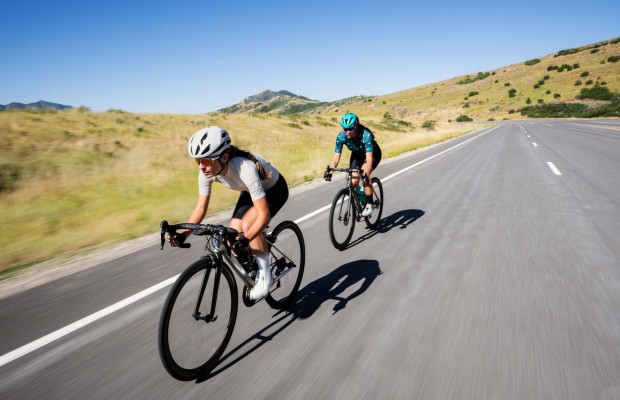
Shimmy Effect: why some bikes become uncontrollable when going downhill

How many calories are burned when cycling

What is heart rate variability and how does it affect the cyclist?
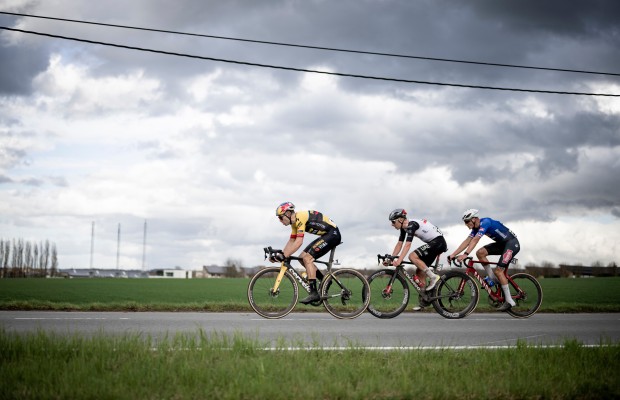
Fat Max Training to efficiently eliminate fat
But let's start with the details of its frame construction.
The suspension system remains faithful to that so-called "virtual" 4-Bar, since with the Flex Pivot technology, it is achieved that, although there is no articulated pivot point in the swingarm, the stays are designed to flex right at that point where a Horst Link would be located. In this way, pursuing the advantages of a 4-Bar system, in terms of sensitivity and independence from braking, but saving that pivot point and, therefore, reducing weight and maintenance.
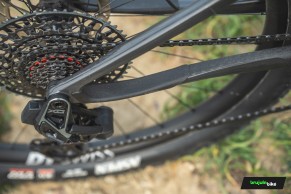
It should be noted that this type of directed flexion technology in carbon has accompanied the Scalpel since its first version, in which the main pivot point was dispensed with, to completely entrust the suspension to the flexion of the carbon, albeit with much less travel back then.
The suspension system of the Cannondale Scalpel has the particularity that it is adapted in its kinematics for each size. This is what they call Proportional Response, and aims to ensure that each user obtains the same sensations regardless of their size.
Focusing on the rest of the frame, we can see that some parts have been slimmed down, such as its top tube, which noticeably reduces its section.
The top tube also presents a smaller vertical section and reduces the angles it traces in its path. The curve it forms in the shock mount area is more subtle, and the "hump" that it presented next to the head tube is almost eliminated. In addition, the tube has slightly softened edges compared to the previous version.
In this upper area of the frame, we see an important novelty visually and probably also functionally, as the shock lockout mechanism is hidden inside the frame at the top. In this way, not only does it disappear from view, but a curve in the lockout cable housing is also eliminated.
It is clear that in the new Scalpel frame, there is a good effort to reduce every possible gram, and probably for this reason, the Stash Kit is dispensed with, which was a space formed by the down tube under the bottle cage to store a multitool.
Another detail that catches the eye in the frame design is the protrusion on the seat tube to orient the bottle cage and thus optimize the space to accommodate two large capacity bottles. This version allows for two bottles in all sizes.
In the rear, we see how they have added a bit more material to the rear caliper mount area and, in addition, they have dispensed with the Speed Release, with the left dropout now completely enveloping the thru-axle. We also see how at the main pivot point of the swingarm, they continue to opt for the so-called Chainstay Garage, where instead of anchoring to the sides of the main triangle, the stays form a compact block that fits into a cavity in the frame itself.
One thing that caught our attention in the new Scalpel is the adoption of the threaded bottom bracket, as has been introduced in other models of the brand. It seems to be a definitive farewell to Press Fit systems.
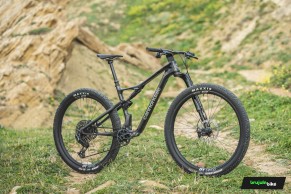
Regarding the type of construction and carbon used, 5 models out of the 6 in the new Scalpel range use the so-called "Series 1" which is comparable to the previously called Hi Mod, and announces a weight without shock, only hardware, of 1850g for the size M frame.
The exclusive LAB71 version has the more sophisticated and expensive "Series 0" construction, which brings the weight down to 1620g.
In the frame construction, Proportional Response is also used. Designing the carbon fiber layers and distributing them to achieve the same relative stiffness in each size.
But let's move on to one of the novelties that the market was demanding, which is the cable routing through the head tube. Here we see a well-executed job, routing the cables inside the headset spacers and coming out just below the stem in models with a traditional handlebar, or including routing through the integrated cockpit assembly in models that mount the new XC-One Systembar.
The system does not include a steering stop, but in our test unit, we found that there is space to prevent the top tube from hitting even when removing the spacers.
Another detail of the design of the new frame is the reduction in the length of the seat tube in all sizes. This will allow for the use of long-travel dropper posts even in small sizes. By the way, this is one of the novelties of the new Scalpel range, which includes a dropper post as standard on all models.
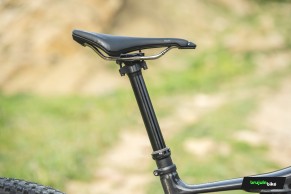
Also, all models now adopt the UDH derailleur hanger, which previously only came on high-end models.
Updated geometry for flying low
As we mentioned earlier, the Cannondale Scalpel has received a very important geometric update. After several years without changes, the trends have evolved drastically towards XC bikes with Trail capabilities, which allow for tackling increasingly technical circuits designed in the highest level races, such as the World Cup, but also in the rest of the cycling world, where the trend to inject adrenaline into any event is reflected.
Thus, we find that the new Scalpel changes its head angle to, nothing more and nothing less than, 1.4°. Going from 68° to the new Scalpel's 66.6°.
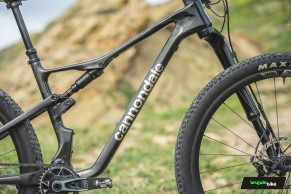
The seat tube angle goes to 75.5°, a figure that will allow us a good position on climbs, but maintaining a certain balance.
The reach also increases, reaching 450mm in size M, or 475mm in size L.
One of the peculiarities of the Scalpel's geometry is that, just as the suspension is customized so that each rider, regardless of size, obtains the same sensations, here too it is intended that each rider enjoys a behavior as similar as possible, and therefore the length of the chainstays also varies with each size, from 434mm in size S to 446mm in size XL.
The Lefty fork also plays an important role in the geometry, and now that the fork offset seems to have standardized at 44mm, the Lefty goes to 50mm. This fact, apart from moving the wheel further forward, maintains a slightly more contained Trail measurement of 105mm, somewhat compensating for the possible sluggishness of reactions that a bike with a large head angle could have.
Another aspect that we mentioned earlier is the reduction in the length of the seat tube, which, although it does not change the behavior of the bike, will allow us to use long-travel dropper posts even in small sizes. By the way, this is one of the novelties of the new Scalpel range, which includes a dropper post as standard on all models.

In all models, the UDH derailleur hanger is also adopted, which previously only came on high-end models.
We test the Cannondale Scalpel 1: premium specifications with a reasonable price
The bike we have had with us for a while to test thoroughly has been the second in the range, behind the exclusive LAB71 model. A bike that, as we will see, does not have to envy much in its assembly to the top bikes on the market.
Starting with the suspensions, we find the Lefty Ocho Carbon 120, the most advanced Lefty, with its carbon construction and 120mm of pure smoothness.
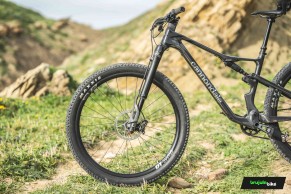
The rear shock is a Rock Shox SidLuxe Select+. Both suspensions have two positions controlled by the RockShox TwistLock remote.
The drivetrain is handled by Sram with its complete XO T-Type AXS group, mounting a 34-tooth chainring, to combine with the 10-52 cassette.

The brakes are the Sram Level Silver 4-piston, with 180mm and 160mm rotors.
For the wheels, we have the reliability guarantee of DT Swiss and their XCR 1501 Spline One wheels, which combine 240 hubs (the front one obviously in Lefty version) with 30mm internal width carbon rims.
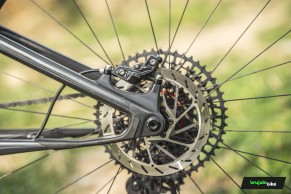
The internal width of the rims is ideal for accommodating high-volume tires like the Maxxis ones it mounts, with a Rekon Race on the front and an Aspen on the rear, both with EXO casing and a width of 2.4".
Finishing with the rest of the components, a Fox Transfer SL Performance Elite seatpost stands out. A very light model at the cost of having only two positions. On top of this, a Prologo Dimension NDR saddle is mounted.
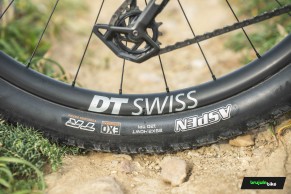
And the jewel in the crown in terms of components is the cockpit that Cannondale debuts with this model. This is the SystemBar XC-One Flat Carbon, integrated carbon handlebar 760mm wide, with a spectacular appearance and the particularity of having the entry of the cables and hoses in the front to guide them inside to the steering.

First impressions
When we received our test unit we had to look in detail to see these slight aesthetic changes, since in general there is no groundbreaking change. It is true that the Scalpel has always seemed to us a very attractive bike, so the continuity is welcome. But digging deeper we can see those thinner and more subtle lines and, of course, the cockpit area has received a spectacular improvement, both for the adoption of internal guiding and for the premiere of the SystemBar XC-One set, which, by the way, comes decorated to match the frame design.
A pity is that, being a test bike, the cables and hoses were not well sized to take advantage of the effect of the internal routing and hide the part of the wiring that is visible.

Of course, the Scalpel 1 passed through our scales and showed the figure of 11.5 kg, slightly more than advertised but keep in mind that, among other things, our unit was a size L and, even so, and taking into account the assembly and capabilities of this Scalpel seems to us a pretty good weight.
After the pertinent adjustments we went out to ride.
Despite being a size L and with a fairly generous reach, we did not feel in a forced position on the Scalpel, thanks to the short relative length of its cockpit.
We rode the first few kilometers on more or less easy trails to get used to the handling and feel the interaction of the suspension with our pedaling.

The first sensation we had was one of great efficiency, in fact, we found the suspension to have a firmer feel than the previous version. This is just the opposite of what we might have expected, since with the increase to 120mm we expected a little more initial sensitivity and oscillation with pedaling. On the first few rides we changed the pressure slightly looking for the ideal sag, Cannondale recommends 11mm of pre-dip in the shock stroke, which is 25%, but after our tests we ended up leaving it close to 30%. Here we found the perfect balance to have excellent traction in rough areas and still have a higher pedaling efficiency than we expected. The truth is that the result obtained in the cinemateca is very good for a relatively simple system.
The suspensions have two positions that are managed from the TwistLoc control. We do not miss an intermediate position because, as we said, we do not perceive a large oscillation with pedaling and except on very smooth trails or asphalt, we can go in open without noticing that watts are lost along the way.
Regarding the TwistLoc control, it is not the lockout control that we like the most, it is not such a natural gesture and its operation requires some force that, without being something exaggerated, in conditions of exhaustion it costs more than pressing a lever. But it has something very positive, and that is that it allows the mounting of a control for the pushbutton post under the handlebar, control that we use more often and we give importance to be intuitive and smooth, and the Fox control that mounts the Scalpel seems to us one of the best we have tested.

The ride of the Scalpel is really good. Small irregularities are filtered out by the suspension, and those 2.4" tires with tread pattern as rolling as the rear Aspen and the Rekon Race in front, make maintaining a high cruising speed on trails a joy.
The Lefty also boasts tremendous sensitivity to small irregularities, allowing us to keep our wrists fresh for rougher terrain.
The trails are an amusement park
It was time to see how much the Scalpel has improved when the terrain slopes down, and the truth is that we had a great time. It is increasingly common for us to venture down areas with XC bikes where before we only went with Gravity oriented bikes, and the new generation of Cross Country bikes gives us that possibility thanks to increased capabilities in this regard.
In the Scalpel we find at once with three very important improvements in this regard. On the one hand the increased travel of its suspensions, which when there are obstacles of some entity, make a clear difference in terms of absorption capacity. In addition to this, the geometric change so pronounced that has received gives it a poise and stability that makes us feel very safe at high speeds. And if we add the standard telescopic seatpost mount with 150mm of travel, we find that even the most technical and steep descents do not make the Cannondale Scalpel wrinkle.

We did several routes predominantly on trails and we were able to see how well the Scalpel performs in these terrains. The Lefty 120 deserves a special mention, although we have already tested it on several occasions, it never ceases to amaze us with its ability to maintain the same smoothness even when the front wheel is receiving lateral stresses in very broken rocky passes.
The fact of using a size L, and also with such a generous reach, meant that in some curves we noticed a lack of support in the front, we had to adapt and invest spacers in the steering to compensate. But even being a little big for us and with a geometry that is more focused on stability and control, we had no problem when it came to handling it in tight spaces.
One detail we didn't like is the fact that the Fox Transfer SL seatpost has only two positions. When you mount shorter travel seatposts this is not a big problem, but with a 150mm seatpost you find that every time you want to lower the seatpost you have to make sure you reach all the way down so that it doesn't come back up, plus it eliminates the possibility of lowering a few millimeters when a situation is a bit tricky but you want to keep pedaling. The truth is that we would have preferred a seatpost with infinitesimal adjustment even though it results in a slight increase in weight.
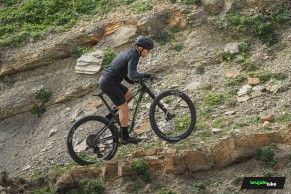
As for the performance of the other components, it must be said that the tires, despite their eminently rolling tread, have performed reasonably well when it was time to go downhill, but the capabilities of the new Scalpel make this one of the limiting factors in the most difficult areas.
Once again, the Sram AXS Eagle Transmission has proven its reliability. This time in the XO version. Offering totally precise shifting even in high load situations.
The brakes have also performed with flying colors. Gone is the unclear feel that Sram brakes used to have, especially the 4-piston brakes. These Level Silver, with its 4 pistons have demonstrated a more than enough power to deal with the speeds that Scalpel allows us to reach and its feel is crisp and dosable at the same time.
DT Swiss XCR 1501 Spline One DT Swiss wheels have proven to be a great choice thanks to its lightness and stiffness, which have perfectly complemented the good values presented by the Scalpel frame and the Lefty to give us a very good security in the lines.
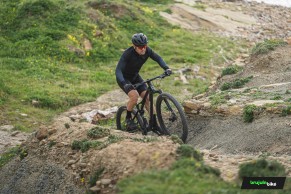
We found the ergonomics of the SystemBar XC-One integrated handlebar to be comfortable. It has a backward angle of 8º and an upward angle of 5º, something very standardized, far from experiments, and its 760mm width seems ideal for Cross Country bikes. It also makes a big difference aesthetically, changing the look of the bike.
Conclusions
We are not lying if we say that when we see the new Scalpel for the first time we miss something more groundbreaking, a more obvious change. But the big change is in its behavior, with an increase in capabilities and versatility very large.
This is something that benefits both competitors and the user on foot, because with these updates the driving of the Scalpel is more noble and predictable and will greatly facilitate things to that user who is not a great expert in technical terrain.
Our test bike was the Scalpel Carbon 1, second in the range with a price of 9.499€. The new Scalpel range includes 6 models, with an entry price of 4,299€ for the Scalpel Carbon 4, and reaching up to 12,999€ for the exclusive top of the range Scalpel LAB71.
Cannondale Scalpel Carbon 1: specifications, weight and price
- Frame: Scalpel, Series 1 Carbon, 120mm travel
- Fork: Lefty Ocho 120 Carbon, 120mm
- Shock: RockShox SidLuxe Select+, 2-Pos Mode, 190x45
- Derailleur: Sram XO Eagle AXS, T-Type
- Controller: Sram AXS T-Type Pod Controller
- Chain: Sram XO, T-Type
- Crankset: Sram XO, T-Type, 34T
- Cassette: Sram XO Eagle, 10-52, T-Type
- Brakes: Sram Level Silver Stealth, 4 piston, 180 / 160mm rotors
- Hubs: DT Swiss Lefty / 240 Ratchet EXP 36, 6 bolt
- Rims: DT Swiss XCR 1501 Spline One
- Spokes: DT Competition Race, Straight Pull
- Tires: Maxxis Rekon Race / Aspen 29x2,4” EXO Protection
- Handlebar: SystemBar XC-One Flat Carbon, internal cable routing, 76mm
- Saddle: Prologo Dimension NDR, Tirox rails
- Seatpost: Fox Transfer SL Performance Elite, 31,6mm, 125mm (S), 150mm (M-XL)
- Weight: 11,50kg
- Price: 9,499€